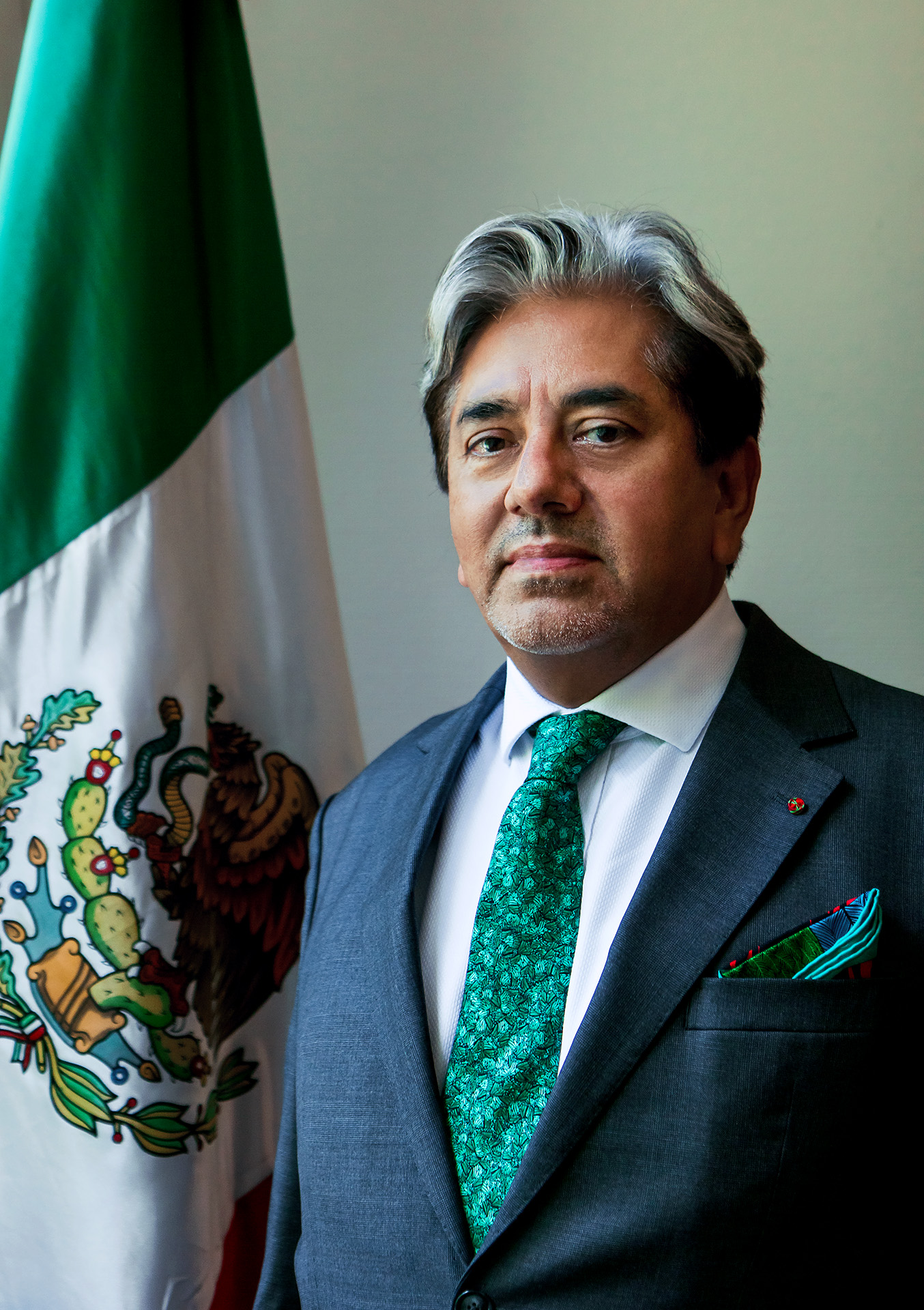Diplomatically Speaking: Mexican Ambassador David Nájera - Giving Mexico a ‘Global Promotion’ in Hungary

Mexican Ambassador David Nájera
By the time you read this, the three-and-a-half year posting of David Nájera as Mexico’s Ambassador to Hungary will have come to an end. While the last year, conducted under COVID-compliant restrictions, is not as he would have wished it, he says the bilateral relationship is in a good place, and will surely strengthen further once something like normalcy returns.
“There is a growing trend,” the ambassador tells the Budapest Business Journal in an exclusive interview at the residence just before Christmas, albeit one also attended by his dog, Bruno. “We are the second partner in the Americas, just after the United States, for Hungary.”
It is a statistic that surprises some, Nájera agrees. Hungarians are generally aware of the cultural importance of May 5, Cinco de Mayo (although they might not know Independence Day is actually September 16), and Día de los Muertos (Day of the Dead), but the scale of bilateral trade is less well known.
“We are around USD 1.65 billion, which is much more Hungarian exports than Mexican imports,” the ambassador explains.
“What we can see is a constant growth, which is much more related to the efforts of the entrepreneurs, the companies, than the governments. The governments have, of course, been providing the framework, but it is much more [down to] when the people discover the convenience to export to that market or this market. In that sense, the main work to do for both parties, is to help the business community discover one another.”
That discovery should also be seen as opening a door, the ambassador says. Mexico’s most significant economic relationship is with the United States to the north; for Hungary it is the European Union in general, and Germany in particular.
So Mexican companies doing business in Hungary, or Hungarian firms setting up in Mexico, also gain access to much bigger markets beyond that. It allows parties in both countries to supply components to a more complex end product.
“The main advantage for this business relationship is to be part of a global process,” Nájera explains.
Too often in the past, the ambassador says, Mexican businesses have exported a single product to a single market. Growth has followed that traditional if somewhat slow-paced model. Nájera believes firms from his home country should think bigger and “take the initiative” when it comes to expansion.
Bigger Horizons
“We have been trying to link Mexican companies with business opportunities here. [….] One of our main arguments is that Hungary is a hub for the region, to see the region as a full market.” To that end, it helps that the embassy in Budapest is also responsible for Croatia and Bulgaria.
It is not all about business, of course. The Frida Kahlo art exhibition in the Hungarian National Gallery in the summer and fall of 2018, was a major success.
“A huge part of the work of the embassy was not so much inside the National Gallery but outside.” Part of that was convincing the authorities that this exhibition could “help locate Budapest as an art tourism destination,” Nájera says. Mexican embassies across the region worked together to promote the exhibition in Budapest.
“And then we discovered that this artist is a phenomenon here in Hungary. That helped us a lot to open up, to talk about Mexico, Mexican food, the museums, holiday destinations. That exhibition has been a very important base from which to promote Mexico in general.”
This idea of combining interests is a theme Nájera and his team have sought to develop. He says the embassy is no more than mid-size in comparative terms for the Budapest diplomatic corps. That means it has to be creative, to find areas where it can tie in several strands. Language is a great example.
“We present a prize for the best Hungarian students in Spanish,” he says. “We work with 16 institutes and gymnasiums in Hungary that teach Spanish as a second language.” The embassy organizes a diplomatic reception for the top three students in Spanish, where they are provided with a diploma and a medal.
“When they study Spanish, we want them also to think about Mexican Spanish. The reception is based on Mexican food, so we invite two or three Mexican restaurants, together with what we produce here. These young guys are going to become customers of those restaurants, sooner or later, and they will see the difference between Tex-Mex cuisine and Mexican,” Nájera says.
“We invite the three winners, their Spanish professors and the director of each institute. We have representatives of universities that teach Spanish, or has Hispano-American studies or international relations studies there, so there is an interesting chance for the students to have first contact with those Hungarian universities. In a regular year we would have […] around 150 guests. The whole ceremony is in Spanish, which is a challenge to some people, but is also part of the recognition for these students.”
The events take several months to prepare, but it creates many little links and builds connections with students who may go on to study or work in Spain, South America or Mexico. “This is a good example of how we try to link several objectives, we make a ‘global’ promotion.”
Tourism Trade
Tourism is another area of growing interest, although the 2020 figures can be ignored in terms of tracking the trend. The estimate for Mexicans visiting Hungary is put at 100,000, although the country tends to be part of a modern day “grand tour” or Danube cruise, taking in several other countries.
For Hungarian tourists, Mexico is more likely to be a single destination, and the trend has been upward. “We have passed from 7,000 to 12,000 [in 2019] in three years,” the ambassador says.
We are close to the ceiling for Hungarians visiting Mexico, because this [Hungary] is a very small market. So, we can grow, but I do not think there is a huge space [for more], while regarding to Mexicans, the possibilities are quite different.”
“How can we be effective and modern in creating those links. That means you need to try and establish personal links with as many economic actors as you can.
Having spent 10 years out of Mexico in postings to China, the United Kingdom and Hungary, Nájera will spend a couple of years back in Mexico City at the Ministry for Foreign Affairs. And there may be some returns due in terms of marriage support.
“My wife is a diplomat and has been posted; she is in charge of our embassy in the U.K. now, so we need to see what is the future course of her career, how I can support her. We have been paying a price to live this separation, so we are looking forward to being together,” the ambassador adds.
“My successor, who will be here in the spring, I guess, I think she will find a very well positioned embassy; a solid base for her to work on and to establish her own agenda.”
This article was first published in the Budapest Business Journal print issue of January 15, 2021.
SUPPORT THE BUDAPEST BUSINESS JOURNAL
Producing journalism that is worthy of the name is a costly business. For 27 years, the publishers, editors and reporters of the Budapest Business Journal have striven to bring you business news that works, information that you can trust, that is factual, accurate and presented without fear or favor.
Newspaper organizations across the globe have struggled to find a business model that allows them to continue to excel, without compromising their ability to perform. Most recently, some have experimented with the idea of involving their most important stakeholders, their readers.
We would like to offer that same opportunity to our readers. We would like to invite you to help us deliver the quality business journalism you require. Hit our Support the BBJ button and you can choose the how much and how often you send us your contributions.









